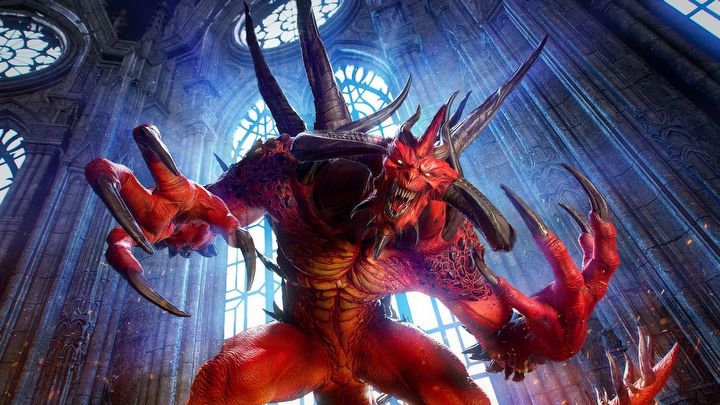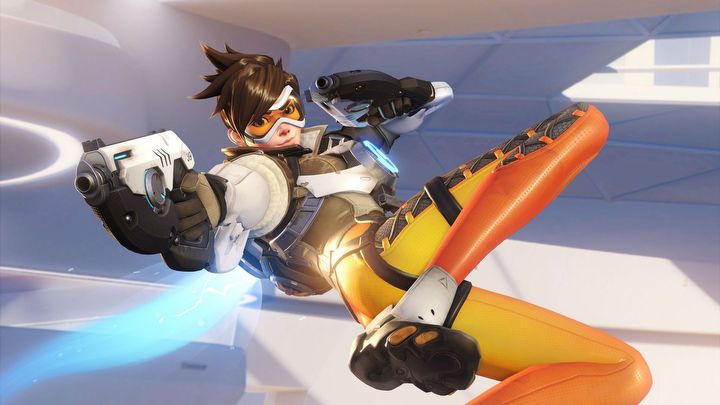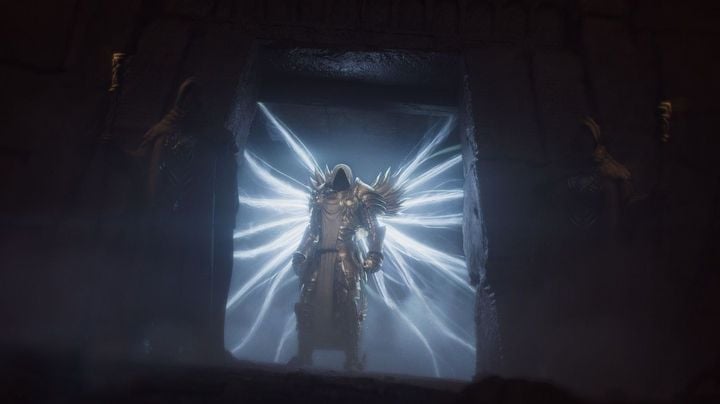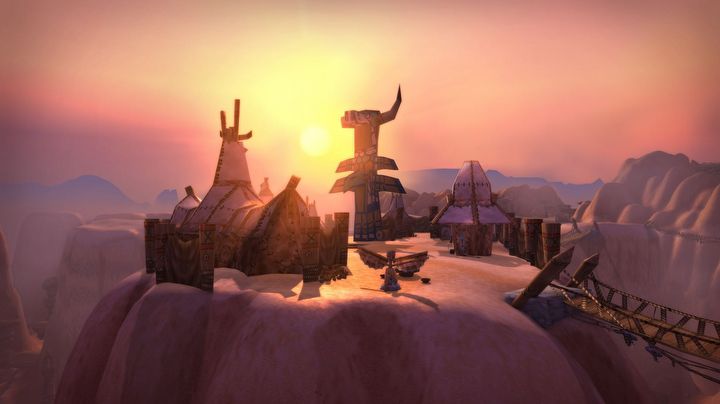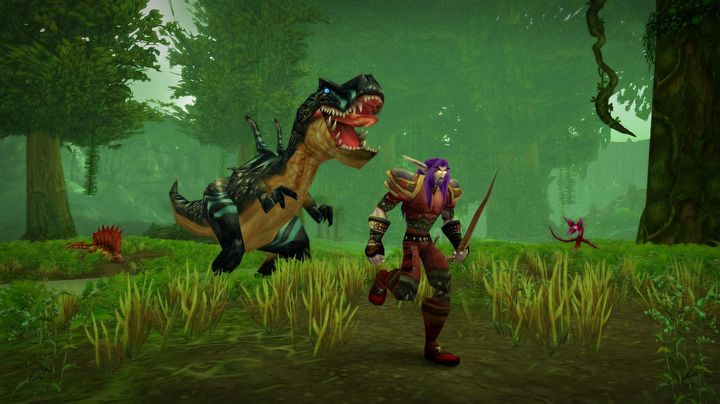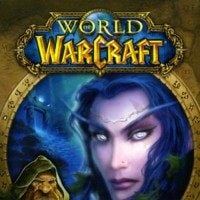"Blizzard and Activision were like oil and water." Interview with Jason Schreier about Play Nice and the history of Blizzard
Blizzard, the studio behind Diablo, Warcraft, StarCraft, and Overwatch, has had anything but an easy history. A history that Jason Schreier set out to capture in Play Nice. We talked about its writing process and Blizzard’s turbulent journey.
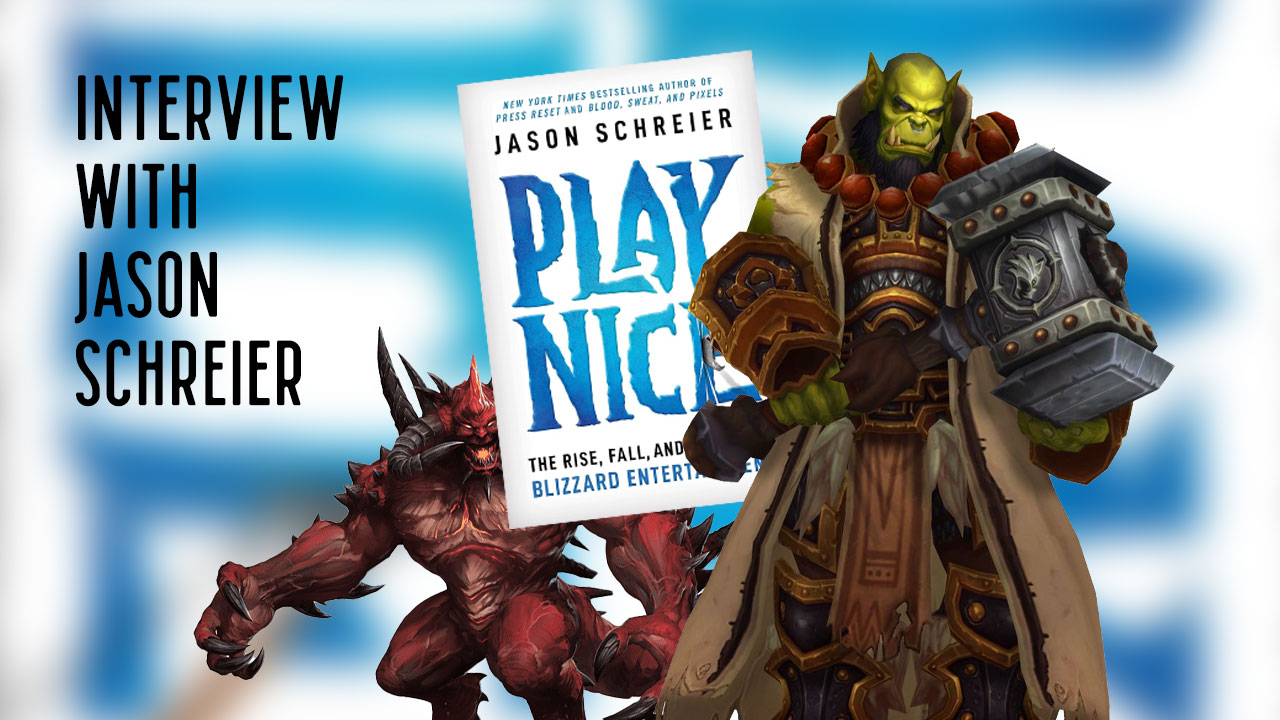
If you are — or ever were — a fan of Diablo, World of Warcraft, or even a casual Hearthstone player, Play Nice might not be the most lighthearted read. I had the pleasure to speak with Jason Schreier not just about his work on the report, but also about Blizzard’s legacy, how the company was perceived over the years, what happened to its employees, and where it might be headed next. So let us, together with one of the most respected voices in games journalism, guide you through the behind-the-scenes story of this legendary studio.
Hubert Sosnowski: Let’s play a little game. The year is 2001. You’re a dev or a designer with big dreams. Blizzard calls and wants you on a project – what do you do?
Jason Schreier: [Laughs] I think that most people would say “yes.” In 2001, everybody would immediately jump to work with Blizzard.
HS: The year is 2012, same deal, a young up-and-coming creator gets the call – what’s their move?
JS: It depends, but probably still “yes”. I think most people would still want to work with Blizzard in 2012.
HS: Fast-forward. The year is 2024 or 2025. Is Blizzard now the kind of company you should run from as fast as possible?
JS: [Laughs] Well, I don’t run. In 2024 or 2025, so many people need full-time jobs that they would say “yes” to that too. Also, despite everything, it’s still Blizzard and they still have killer games. For all Blizzard’s faults, I have two thoughts. A lot of other companies have the same issues as Blizzard does. They just haven’t been as well documented, and you can add to it their own kinds of troubles. Unlike many other companies, you could work for – if you’re hired by Blizzard, you know that whatever you work on will be played by millions of people. That is very intoxicating and alluring. You could’ve been spending years of your life on something like Concord, that nobody plays and it’s shat down in two weeks. That’s not gonna happen if you work at Blizzard. It’s very appealing for creative people who want their work to be seen.
HS: So it’s still profitable to join Blizzard? Still worth it?
JS: I think so, but also it very much depends on your team and who you worked with, such as a lot of Blizzard’s general company issues. A lot of people I spoke to were in teams, where they had great experiences, others… not so great. The fact that a lot of that stuff has been made public helped to push some changes. Not being led by Activision anymore also allowed to make some changes. So I wouldn’t fight for a statement like: “OMG, Blizzard is a toxic workplace.” They’re going through the process of evolution, which improves certain things. In many ways, it’s good that a lot of these problems were discussed.
HS: I wanted to capture the shift in reception of Blizzard and map the breaking point. When I read your book, I thought about WoW, but correct me if I’m wrong.
JS: The breaking point for the players and the broader audience is different from that for employees. I was putting myself in the shoes of the latter. If you ask for the player… The answer to the question: “Would you buy Blizzard’s game without knowing anything?” would sound different in 2001, 2012, and 2024. In the past, people would just buy anything that came from Blizzard. They had a reputation of making 10/10 games, no matter what. Now that is not the case anymore – so here’s the breaking point from the product standpoint. From the people's standpoint… Those who have read Play Nice would notice that a lot of Blizzard’s workplace problems were even worse in the 90s, back when Blizzard was at its most prestigious and pristine. It had a lot of frathouse atmosphere and boys’ club cultural tendencies. That could be toxic for a lot of people in a way that wouldn’t be tolerated in 2024. So in some ways it’s a much better place to work now than it was 25 years ago, despite the much worse reputation that the studio had back then.
HS: You’ve just pointed in an interesting direction. Because we have three Blizzard’s great franchises. Warcraft, Starcraft, and Diablo. I’m wondering if it would be even possible to transform them into such important things without the turmoil that troubled the company in the 90s and 00s? Maybe the chaos and the creative clashes were so deeply coded into Blizzard’s DNA that it was inevitable to make games that way?
JS: That’s a great question. If you go back in time, Blizzard in the 90s was a much smaller company than it is today, counted in hundreds, not thousands of people. If you look at StarCraft, it may be Blizzard’s finest achievement. It’s definitely an influential game. It took a lot out of people, and it was in development for two or three years, depending, how you count. It came with a lot of crunch, and a lot of people were sleeping in the office to make it.
We’re talking about a pretty small team, made up of dozens, almost entirely guys. There were a couple of women, but 99% of the crew were men. They’ve worked in a way that they could communicate very closely and playtest the game every single day to check out what didn’t work. They were all gamers and had a very certain way of looking at the world. You could say that “OMG, that crunch is horrible, it took away their lives,” because, yes, some people even had memory losses as a result of that crunch, because it hurt them. But you can also say that this atmosphere, the collective creativity, breeds that sorts of things, and the game would not be what it was without that environment. Those experiences can be both horrible and brilliant.
Part of the possibility of creating things is that it’s hard to know if those kinds of masterpieces would be put together without the struggle. I think that a lot of game developers have struggled with that kind of question over the years. “How much do I have to sacrifice to make this thing great?” or “Does a great art require the sacrifice?” – and I’m talking about just the crunch. You can objectively say “OK, this thing doesn’t have to be there,” but then there are other parts of the equation. Like the frathouse mentality. There were drunken antics, and people would hang out with each other all the time after work – they were having a blast. Chemistry was off the charts, they were all best friends and very close to each other. That had its pros and cons. It made working really fun, creatively and socially satisfying. If you have a great chemistry with the co-workers, it leads to better results.
It also only worked if you were a specific type of person, because if you’re a woman, it felt different. Some of women had to embrace it in some way, accept the fart jokes and this kind of testosterone in the air. It was a complicated thing to do. So you could say that maybe in other circumstances, Blizzard would have been a better workplace for women, but it could also have lost the chemistry that made them what they were. And they would make different games. It’s hard to separate those things, because all the Blizzard games were the product of that environment. I don’t think there’s an easy answer to the question of what’s good and what’s bad about that.
HS: Was it worth it in the end?
JS: For who?
HS: Let’s consider three perspectives. Devs, gaming community, and the product itself.
JS: If you’re working at Blizzard, if you’re the CEO like Mike Morhaime, you’re now rich as a result of your time in the company. If you’re a regular artist and didn’t stay for the World of Warcraft, then maybe you’re not rich, and maybe it wasn’t worth it. So that’s the wide spectrum – and I’m speaking from the financial point of view. Creatively, maybe it was or may this person may have felt mistreated. The hours the artist put in may not be worth it in the end, and it took away part of his/her life. Ooooor maybe you say: “hey, I was in my 20s and it was ok, but now that I’m in my 30s I don’t wanna go through that again.” It’s very complicated and it differs depending on who you are.
For the players, it was worth it, because we got to play all these amazing games. We had no idea what was going on inside, especially back then. There was way less communication on how games were made. As for the gaming community… The influence of StarCraft, WarCraft, World of WarCraft, and Diablo is just impossible to measure. Every person who made the game has been influenced by the Blizzard game in some way or another. So it was 100% for the community and for gaming as a whole. Back to the workers – we should point out the lack of compensation. It drove a lot of devs to leave and start their own companies. They didn’t feel treated well, and for them it wasn’t worth it, especially after StarCraft. It led to the creation of the company called Fugitive, which closed pretty quickly.
HS: All this turmoil caused some disasters in Blizzard, even in its early days. Could the company avoid any of the bigger ones, like cancelling the original Diablo 3 and Titan, or all the mess with inappropriate behaviors towards women?
JS: I think that cases of Titan, Diablo 3, and other creative decisions were a little bit harder to avoid. When you’re developing something, it’s impossible to know what you’re doing. Especially after WoW, the pressure and the growth of the company were like anything they’ve been through before. They’ve really had to learn the hard lessons. Especially on Titan. The game really suffered from being in the shadow of World of WarCraft. It had to be Blizzard’s next BIG MMO and surpass WoW. It's a crazy amount of pressure to live up to. When you combine it with the lack of financial pressure, because you know that you have WoW as the source of income, you know you don’t have to rush. You can wait forever to make decisions and take your time – that leads to disaster. That’s what really happened with that game. Maybe some parts of that were avoidable, but I don’t know.
Facing the Californian lawsuit that led to a reckoning about how Blizzard treated women… I think that was very avoidable, because a lot of people knew about some of the problems. There were definitely rumours floating around. Some people engaged in bad behaviour were allowed to stick around for years and years. I think that Blizzard’s HR, Mike Morhaime, and the company as a whole definitely could do more to take care of some of that stuff.
HS: Blizzard had a lot of other problems. I’m wondering, especially after reading your book, how much of Blizzard’s recent mess is on Activision and Kotick, and how much is Blizzard’s own doing?
JS: We’re talking about a few different things right now. The mistreated people, the bro culture, the discrimination towards women – nothing of that had to do with Bobby Kotick. It was happening in Blizzard before Activision took over. Some of the issues that contributed to Blizzard’s current status and reputation were the results of conflicts between Blizzard and Activision. Especially the ones that led to Blizzard’s leaders, designers, artists, and programmers leaving the company. It’s hard to point out the tangible reasons for someone’s leaving and what that did to the company. It’s impossible to measure.
That said, you could point to people who left to start their own companies. Second Dinner and Marvel Snap! would not have happened if not for the Activision influences. Mike Morhaime and a lot of other ex-Blizzard people have left to form Dreamhaven. They’re about to release their first game, Sunderfolk, in a few weeks. All of that wouldn’t occur if there weren’t any hostile takeovers. That, I think, had the biggest impact on Blizzard, combined with the inner culture changing. They’d been more focused on monetization, releasing things more quickly. There was a lot more pressure to put resources into World of Warcraft, to focus on predictability and money-making. That came not just from Activision, but also from the people who came to Blizzard and were Activision-minded, most notably Blizzard CFO Armin Zerza. He came in 2015 and drove a lot of culture that didn’t really fit with the values that Blizzard believed in for the previous 20-25 years.
HS: You’ve mentioned that influence, but on the other side, Blizzard was a pretty chaotic environment. So maybe there was some need for bringing in at least a little bit of order?
JS: Yeah, when you’re looking at, for example, Titan, then yes. The game was in development for seven years, and Blizzard has never figured out what the game really was. How did they let that happen? Of course, you could say, they needed some discipline here. That’s what Bobby 100% would say. Even some of the most hardcore Blizzard people would admit that, yeah, they could’ve used some more rigor and proper production practices.
That said, I think you have two extremes there. “Devs first, creativity, taking as much time as needed” versus “We’re a machine, we release Call of Duty every single year, we believe in predictability, it must be on schedule.” Instead of meeting in the middle, Activision came and said: “You must be like us.” Maybe a softer touch, a willingness to learn a little bit from Blizzard, would have had more productive results. The corporate clash was the result of a lack of compromise. And, to be fair, some people from Activision, like Bobby Kotick or Armin Zerza, would come and offer a decent idea, which was rejected, because it came from Activision. Those companies were like oil and water, their values were so far apart that you knew things were not gonna go well.
HS: While reading Play Nice, I sometimes felt like Kotick tried to get Blizzard, but in the end, money always won.
JS: Bobby has a certain way of doing things. He can be charismatic; if you’re one of his friends, if he sees value in you, he can be really positive towards you. He can charm the pants off the people, but he’s also very single-minded and set in his ways. Giving an example from the book: when Titan was canceled, Mark Morhaime got the devs together and said: “Hey, we’re gonna take a small team of you, guys, and you can pitch something new. You have a few weeks to get together that pitch.” This team, led by Jeff Caplan and a couple of other people, put together a vision that became Overwatch. They took it to Morhaime, then to Activision.
A bunch of the executives from the latter came to Irvine. They were wondering what was this crap, because they’ve made games like Call of Duty and doubted that Blizzard could pull off their FPS. Bobby was quiet during the rest of the meeting, but he looked at the art and said that this was amazing. Suddenly rest of the Activision crowd changes the perception and says that everything is cool and they can make this work. That’s a great example of Bobby recognizing something that everybody recognizes: Overwatch has incredible characters and art. This is very “Bobby,” but he could see those characters becoming toys and merchandise, which can make the bazillion dollars.
Even after that meeting, Kotick was calling up Blizzard’s executives and asking why the company was working on this instead of putting more people on WoW. Because in his mind, Blizzard had to release a new WoW expansion every single year. What Blizzard saw was unreasonable. Of course, Bobby would say the same about the crew from Irvine. It’s really just like a chasm in values, expectations, and the way of looking at games. At Activision, Bobby always hired people who came from the CPG industry, from companies like Nestle. Bobby liked those people, because they knew how to hit schedules and deadlines, how to be predictable and disciplined. He didn’t see games as an artistic endeavour; he saw them as products to be put in the box and sold. That fundamental divide was never gonna be bridgeable.
HS: But now Kotick’s era is basically over. We’re in Microsoft and Phil Spencer’s era. Is Blizzard in the healing phase now? Or is it just a corporate stage play to calm the media and shareholders?
JS: I think it’s a little bit too early to tell. They’ve got a lot of things they’ve been working on, a lot of wounds to heal. The new head of Blizzard is Johanna Faries, who has been there for a little over a year – not super-long. From the cultural perspective, having everything exposed made them deal with everything internally. And obviously Microsoft is having its own kind of growing pains at the moment. Who knows, what’s gonna happen with the Xbox in the next couple of years.
HS: I asked because I saw some positive changes in the approach to publishing. The second expansion for Diablo 4 got pushed to 2026 to be more polished. Is Blizzard back to “when it’s done” attitude?
JS: I don’t think that Blizzard ever released something that wasn’t polished or that felt premature. You could argue that Overwatch 2 didn’t feel like a sequel, but that’s another conversation. It wasn’t unpolished. I can’t think of any of their game that were released too soon, like Star Wars: Outlaws.
HS: So what about Phil Spencer? What’s your view on his influence, after Microsoft took over? Spencer seemed to get the company culture better, and after all, he’s more of a gamer than Kotick was.
JS: It’s another case from the file: “too soon to tell.” Unlike Bobby, Phil is not in charge of everything. He reports to higher ranks at Microsoft. One of the reasons that Xbox was making all the big changes over the last year (closing big studios, etc.) was the result of pressure from above Phil Spencer, so I’m not sure if we can believe that he can save the day. Ultimately, he’s accountable to other people. That said, people certainly like him. So far, it seems that he’s been giving Blizzard a lot of autonomy. We’ll see what comes out of it, but it’s so very early, especially from Blizzard's standpoint. A year in Blizzard is a week anywhere else. [Laughs]
HS: After the whole research experience you had, what do you think is next for the Blizzard company? Next in terms of games, work culture…
JS: I think a lot of people are still wondering. Remote work was always a big topic in Blizzard over the last couple of years, and it’s very controversial. Two years ago, the company asked all of its employees to return to its offices. There were big layoffs at Xbox and Blizzard. There are also conversations about bonuses and other nitty-gritty workplace topics. It’s a little bit too early to give something more concrete, because it’s been a little more than a year since this new era started.
HS: But the changes have started, and I’m wondering if the gaming community in general and people at Blizzard will benefit from all of those experiences.
JS: Like I’ve said before, even having it all brought to light and not kept in the dark as rumours, helps a lot. It’s the ability to share the stories, both positive and negative.
HS: Will the United Videogame Workers, the GWA, change the landscape of the work environment in the industry? Will it be strong enough to affect giants like Blizzard?
JS: I don’t know. It’s still very early. I don’t think that the recently announced union has any power in terms of what they can do to workplaces. It’s more of a ceremonial event, where they’re gonna join, send some tweets, and show their power together, but they can’t do anything, as opposed to being unionized within the company. Then you can officially organize with the national labour board and negotiate the contract with your company, and that’s what brings tangible perks and benefits for you. That’s kind of a different world from what we’re seeing in the news. It remains to be seen, but the progress has certainly been slow right here in the U.S.
HS: In your opinion, is there anything besides unions that can actually help regular, rank-and-file game devs that encounter all the things we’ve talked here about (and those you’ve described in Play Nice)?
JS: Even unions are pretty limited. You have to go through certain processes, and at the end of the day, the company has to care to get rid of the bad apples. Organization, internal actions, and public pressure can help. Companies like Blizzard, Ubisoft, or Riot have to overhaul things and fire people as a result of public pressure. That’s a big weapon that people can use, especially combined with social media. They can feel more empowered to publicly speak about those issues. But of course, it can also lead to some misleading accusations from people who aren’t using their voices responsibly. It’s complicated, but that can be a useful tool for speaking out about poor conditions.
HS: Since we’re speaking about that. Rumours and horror stories about Blizzard circled around for years, but were there any revelations in your research that hit you personally harder than the rest?
JS: Hearing some stories from the 90s was a little bit disconcerting, because of course I’ve grown up playing Blizzard games in the 90s, like Warcraft, Starcraft, and Diablo. Just knowing that the games I loved were the product of sacrifices made by a lot of people is a little bit unsettling. There was also hearing stories about people sleeping under their desks and putting in just a crazy amount of hours. It can be fun for some people for short bursts of time. It might be even exhilarating: “hey, I’m gonna spend a week just killing it!” But when you do it for months and, in some cases, for years… that’s brutal. It can take a piece out of you. Knowing that some of those games were created under those conditions is pretty heartbreaking.
HS: So you were a Blizzard fan or at least a player who enjoyed their games?
JS: WarCraft 2, StarCraft, and then Diablo 2 were the games that I’ve spent the most time with. I’ve played all of the Blizzard games, but StarCraft and Diablo 2 came out when I was a teenager, and I’ve put hundreds of hours into them.
HS: Did your research change your reception of your favourite games?
JS: I can’t say it changed any of my views on the games themselves. It just helped me in getting a deeper understanding of what the culture in Blizzard was like, what it was like to work there, and what it took to make those games. I found that really interesting and helpful. So no, it didn’t affect me like that. It won’t make me say: “I will never play StarCraft again!” or anything like that.
HS: Okay, thank you for the interview, and it was a pleasure!
JS: Thank you as well.
